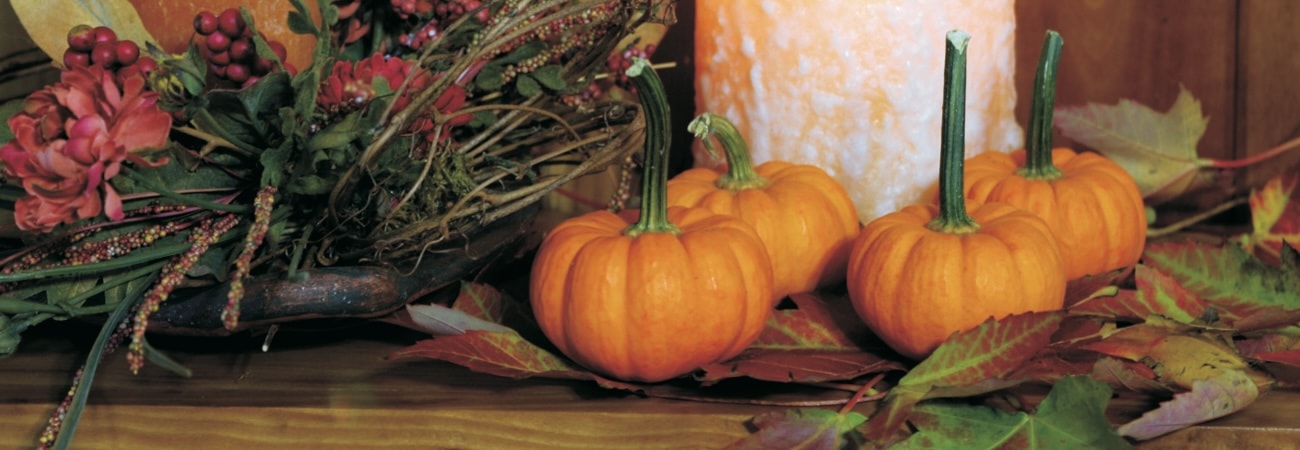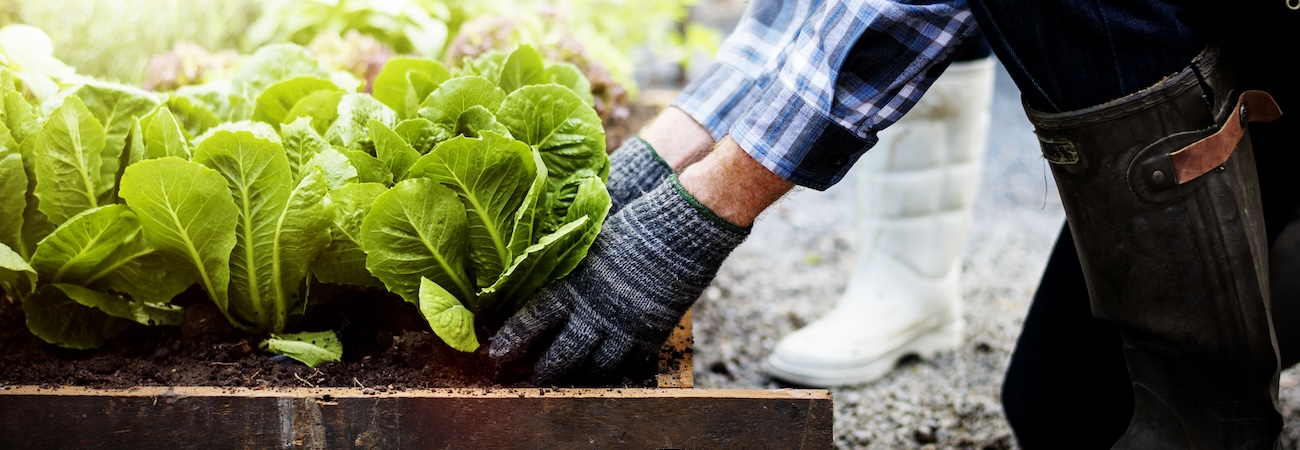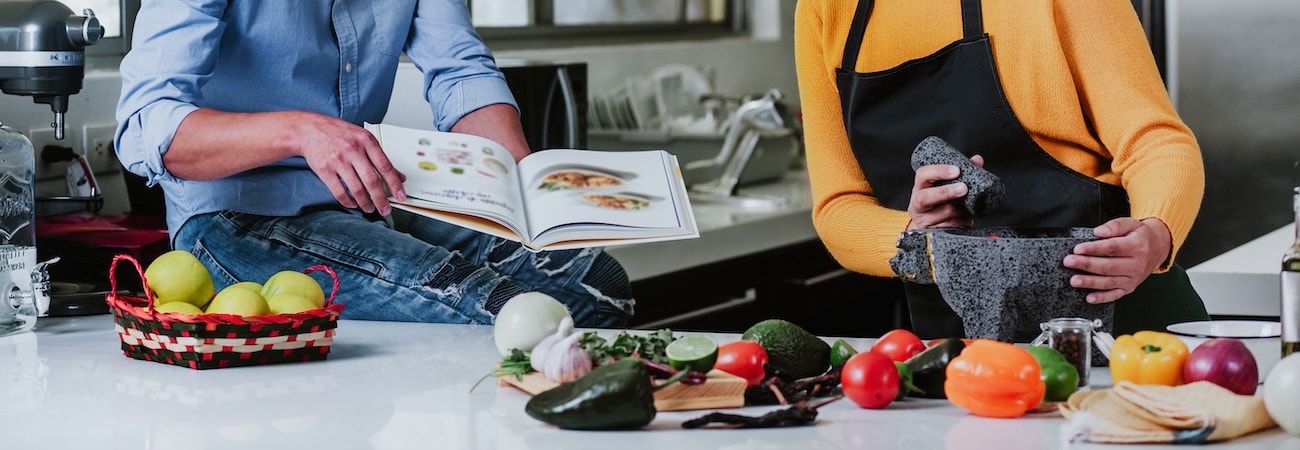
Ann’s Almanac – October
A mellow October day is perfect for autumn digging, planting bulbs, trimming hedges, pruning roses, raking up fallen leaves and of course harvesting fruit and veg. It’s also the time for woodland walks, foraging, and the first log fires of the season. October can be one of the wettest months of the year, so be sure to make the most of every dry, sunny day!
While you might be giving everything a good tidy, please spare a thought for the wildlife and don’t make your garden too immaculate. Birds, insects and amphibians all need food and shelter if they’re to survive the colder months ahead, and a pile of leaves or logs provides a welcome haven.
October is my favourite month to start planning for next year. While I can still remember what worked well in the garden, I also know what I’d like to change and love browsing the new seed ranges for inspiration!
Listen! the wind is rising,
and the air is wild with leaves,
We have had our summer evenings,
now for October eves!
– Humbert Wolfe

Jobs to tackle this month
My top tasks for October include:
- Sow Broad Bean ‘Aquadulce Claudia’ or ‘De Monica’ now for an early crop in May/June. This might also help you to avoid blackfly.
- Sow cut-and-come-again salad leaf seeds for the greenhouse or windowsill.
- Sow some herb seeds to grow on windowsills through the winter. You’ll need them to flavour all that scrumptious comfort food!
- Plant onion sets and garlic for cropping next summer.
- Harvest pumpkins on a dry day and leave in the sun so that the skin hardens.
- Pull up and compost any remaining annuals. Replace them with winter and spring flowering pansies, wallflowers, bellis and primulas. You’ll find great offers on winter bedding plants here.
- Rake up and remove fallen leaves and aerate your lawn – our Cobra electric lawn scarifier and aerator makes the job easy.
- Spring flowering bulbs are still available so make sure you have enough for a blaze of colour next year.
- October can bring strong winds so check your tree stakes are nice and firm.
- Improve the condition of your soil and add nutrients by sowing Green Manure. This is one of the easiest and most environmentally-friendly methods to improve next year’s crops.
- Plant or repair hedges. Take a look at our hedging plants, many of which are grown at our own Devon nursery.

From plot to plate
Here are some of the delicious crops I harvest in October:
- Plums: Plums will be plentiful this month. Yes, they make delicious brandy and jam but this versatile fruit is worthy of a variety of dishes – just remember to stone your plums first! Savoury plum sauce is one of my favourites. Cook the fruits alongside a joint of pork and then whizz up with some soy sauce, chilli, ginger and a pinch of sugar. For a sweet plum sauce, simply heat your fruit in a pan with some lemon juice, honey and mixed spice before mashing and serving over vanilla ice cream. Delicious.
- Cabbage: This traditional favourite is perfect for growing in the British climate, and is one of the most versatile and tasty veg. ‘Savoy’ is the slowest growing of the cabbages and, although it can be eaten from July, it’s better left until it reaches its best, in October. With its firm texture and robust flavour, savoy cabbage works well in soups and stews. Removing the core will also enable you to stuff your savoy, perhaps with sauerkraut, minced beef and tomatoes as they do in Eastern Europe.
- Pumpkins and winter squash: Synonymous with autumn, these muck-loving plants need a sunny spot with plenty of manure. Having sprawled around the garden all summer, by October the fruits are mature and should be harvested before the first frosts. If you allow their skin to dry and cure, most squashes can be stored successfully for several months. I like to slice off the top, scoop out the seeds and flesh and then bake them, upside down, until crisp. Then fill with squash soup, curry, salad or whatever else takes your fancy. Squash is technically a fruit and so works well in sweet dishes. Substitute grated squash instead of carrot in your carrot cake recipe and you’re in for a real treat.

Recipe of the month
Ann’s plum ketchup recipe
You will need:
- 2kg plums – stoned and chopped
- 250g onions, roughly chopped
- 125g sultanas
- 4 red chillies, chopped
- 2 tsp ground ginger, chopped
- 1 tsp whole allspice
- 1 tsp whole peppercorns
- 570 ml malt vinegar
- 225g salt
- 2 tsp sea salt
Method:
- Pop the first 7 listed ingredients in a pan with half of the vinegar.
- Simmer for half an hour, stirring frequently.
- Remove from the heat, strain through a sieve and purée.
- Return to the pan, and add all the remaining ingredients along with the rest of the vinegar.
- Simmer for 1-2 hours or until thickened.
- Funnel into sterilised bottles. Keep in the fridge once opened.
- If you don’t have a plum tree, then now is the time to buy one!
Fancy growing something new?

We all have our favourites – tried and trusted varieties of fruit and veg that we grow each and every year. But it’s also fun to try something new. Here’s my suggestion:
If you haven’t grown horseradish before then why not give it a go? Simply put 2 or 3 roots, known as thongs, into a container. This perennial vegetable spreads in the ground, so is best grown in a pot. Then harvest the long roots in late autumn and winter to make your own freshly grated horseradish sauce.
You may also be interested in
- Flower seeds to sow in October
- Vegetable seeds to sow in October
- Ann’s allotment and gardening guide – September
- Ann’s allotment and gardening guide – November
Lead image: Pumpkin ‘Gold Speck’ F1 Seeds from Dobies
